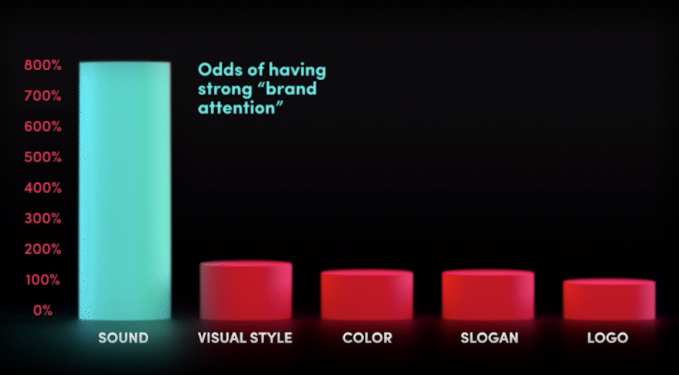Unlike other video platforms, which have traditionally emphasized creating for ‘sound off’ environments in order to maximize your viewing opportunities, TikTok has repeatedly noted that sounds is crucial to the user experience, and that marketers need to consider audio as an equally significant element as the visuals in their clips – if not more so in some respects.
Underlining this, TikTok has launched a new insights series that will explore the importance of sound in clips, and provide more context as to how and why brands need to consider sound as a key part of their overall branding effort.
You can read the first post in TikTok’s ‘Evolution of Sound’ series here, but in this post, we’ll look at some of the key notes.
First off, TikTok reiterates that 9 out of 10 users view sound as being vital to the TikTok experience. For brands specifically, TikTok says that its research has shown that brand linkage and recall increase by over 8x when distinctive brand sounds are leveraged in ads, compared to other elements like slogans and logos.

That’s a hugely significant stat, which clearly underlines why brands need to consider their audio elements, in order to maximize brand awareness and resonance.
TikTok further reiterates this, with internal data showing that sound can boost brand engagement, while music also plays a key role in user response.

Again, if you’ve been aligning your video creation processes with other platforms, like Facebook, which, in the past, has specifically recommended that brands create for ‘sound off’ environments, your approach to TikTok needs to be different, as sound is a key element that can significantly boost user response to your content.
Really, you’re approach to TikTok should be entirely different, and aligned with the organic content trends in the app. If you want to win on TikTok, the best way to build for the platform is to immerse yourself in the content that’s being posted on the platform, so you can get a feel for how people are engaging in the app, specifically, and how your brand messaging will fit.
With this in mind, TikTok poses three key questions for marketers in mapping out an audio-inclusive strategy:
- What are the sounds of your brand?
- Is your brand leveraging sound strategically?
- How can your brand leverage sound on TikTok?
Again, on TikTok, audio should be considered as significant a branding element as your visuals, and TikTok outlines several ways in which you can research and develop your audio branding approach.
- Trends are how sound travels on TikTok. Some start as a simple voiceover, while others take shape in a snazzy recording studio. Check out the Discover page to see what is currently trending.
- Music sets up the mood and the rhythm. You can create entirely new sounds, amplify branded sounds, or license trending sounds. The possibilities are endless.
- Narration allows users to follow the happenings of a video or add in relevant voiceover. After filming your footage in the TikTok app, you can add narration by selecting the ‘Voiceover’ option from the top right menu.
- Add captions – a staple in TikTok content – so that your video can be understood even by those who aren’t able to hear it.
- Sounds parallel or amplify the actions in a video. When you post a video with original audio, users will be able to use that same audio for their own video creations.
Think about how sounds or accompanying actions in your videos could entice people to join in and post their own versions. A sound that goes viral can get your brand in front of a much broader audience.
Some key considerations for your TikTok branding approach, and with more brands set to add TikTok into their digital marketing mix in 2022, with the app on track to reach 1.5 billion users, it’s important that if you are looking to stand out to TikTok users, that audio is a top of mind element.
You can read the first post in TikTok’s ‘Evolution of Sound’ series here.
